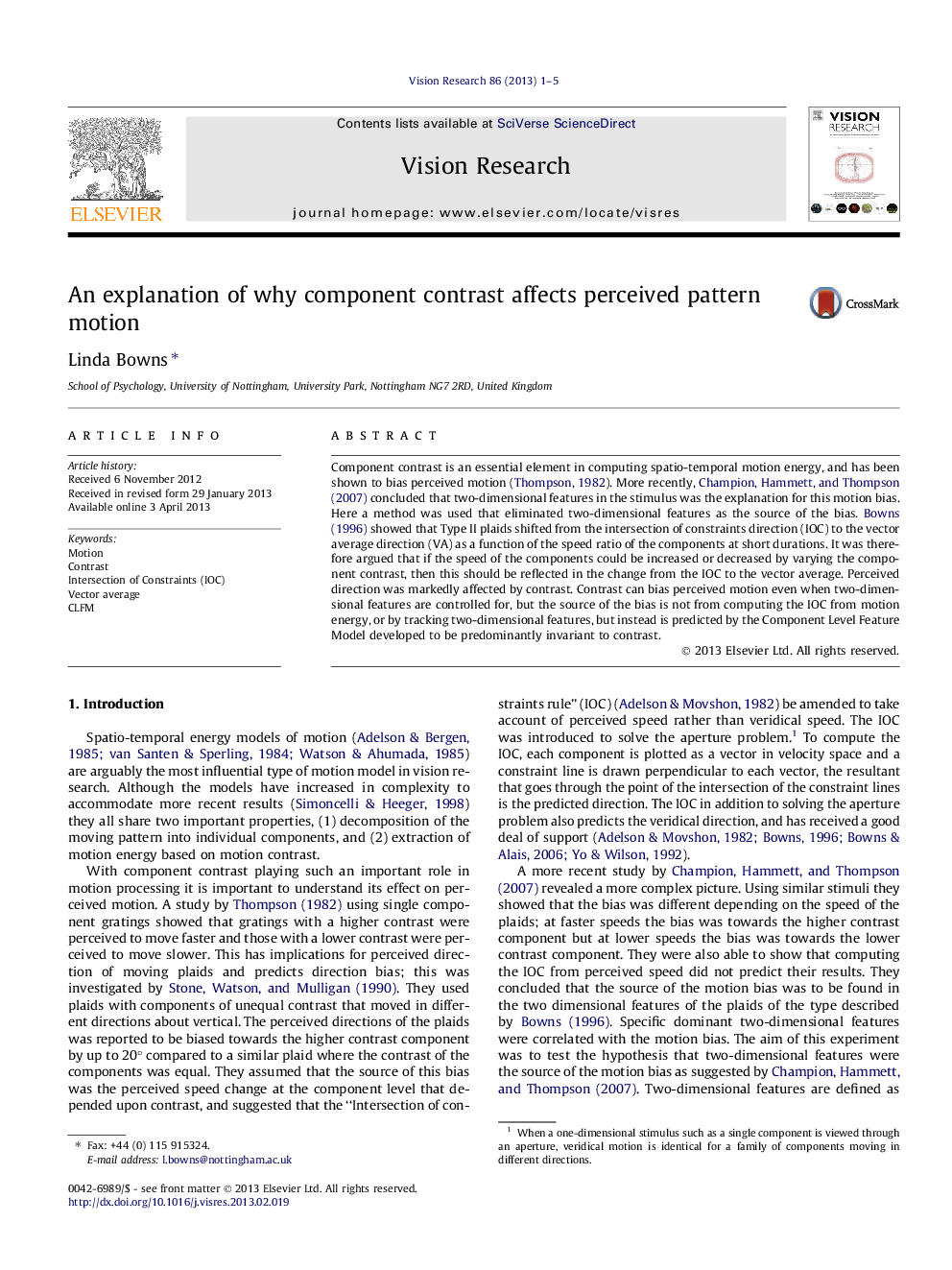| Article ID | Journal | Published Year | Pages | File Type |
|---|---|---|---|---|
| 4033793 | Vision Research | 2013 | 5 Pages |
•Investigates the effect of contrast on perceived pattern motion.•The previous results are confounded by two-dimensional features.•This study controls for two-dimensional features.•Contrast continues to produce an effect.•The results can be explained by the Component Level Feature Model.
Component contrast is an essential element in computing spatio-temporal motion energy, and has been shown to bias perceived motion (Thompson, 1982). More recently, Champion, Hammett, and Thompson (2007) concluded that two-dimensional features in the stimulus was the explanation for this motion bias. Here a method was used that eliminated two-dimensional features as the source of the bias. Bowns (1996) showed that Type II plaids shifted from the intersection of constraints direction (IOC) to the vector average direction (VA) as a function of the speed ratio of the components at short durations. It was therefore argued that if the speed of the components could be increased or decreased by varying the component contrast, then this should be reflected in the change from the IOC to the vector average. Perceived direction was markedly affected by contrast. Contrast can bias perceived motion even when two-dimensional features are controlled for, but the source of the bias is not from computing the IOC from motion energy, or by tracking two-dimensional features, but instead is predicted by the Component Level Feature Model developed to be predominantly invariant to contrast.
